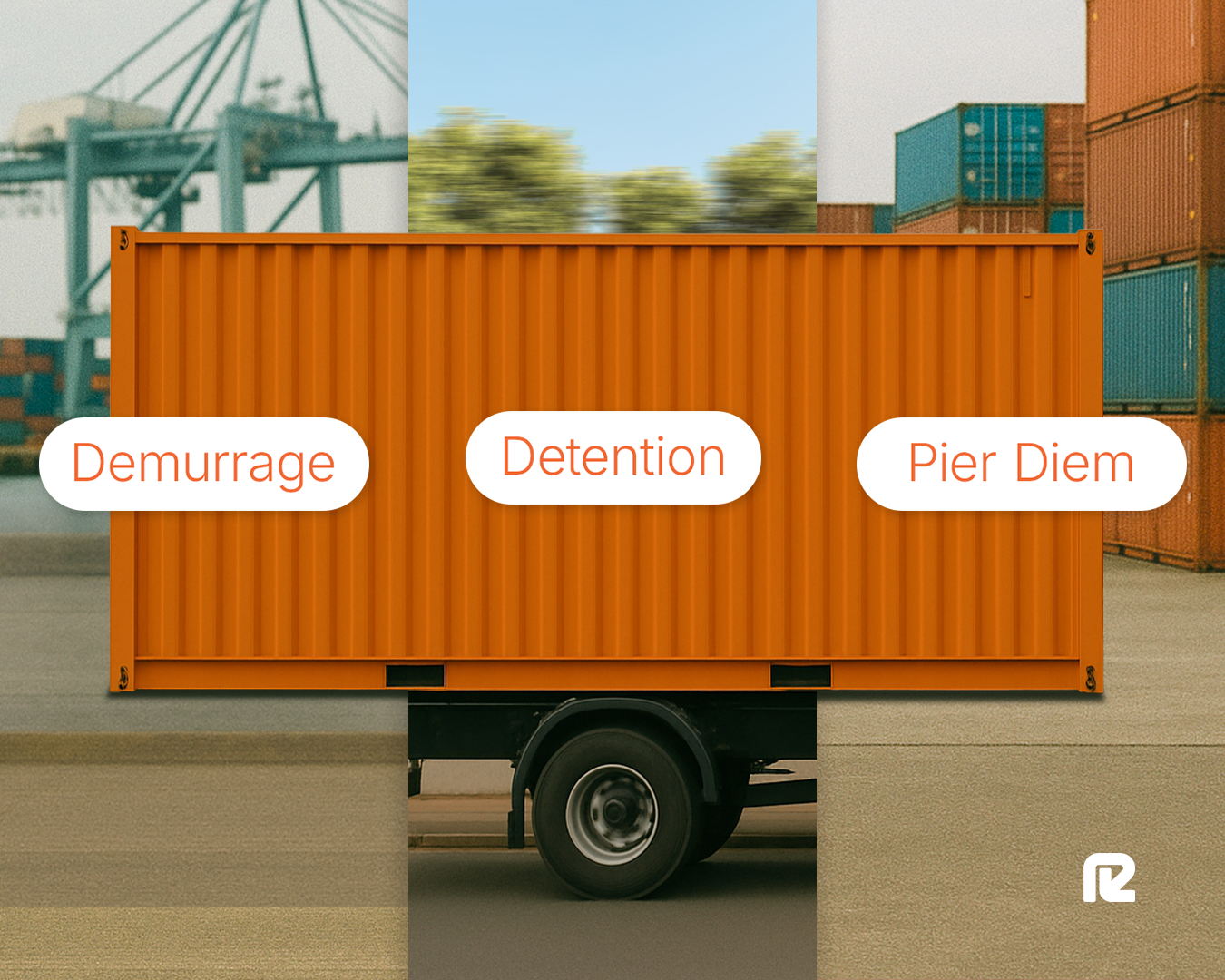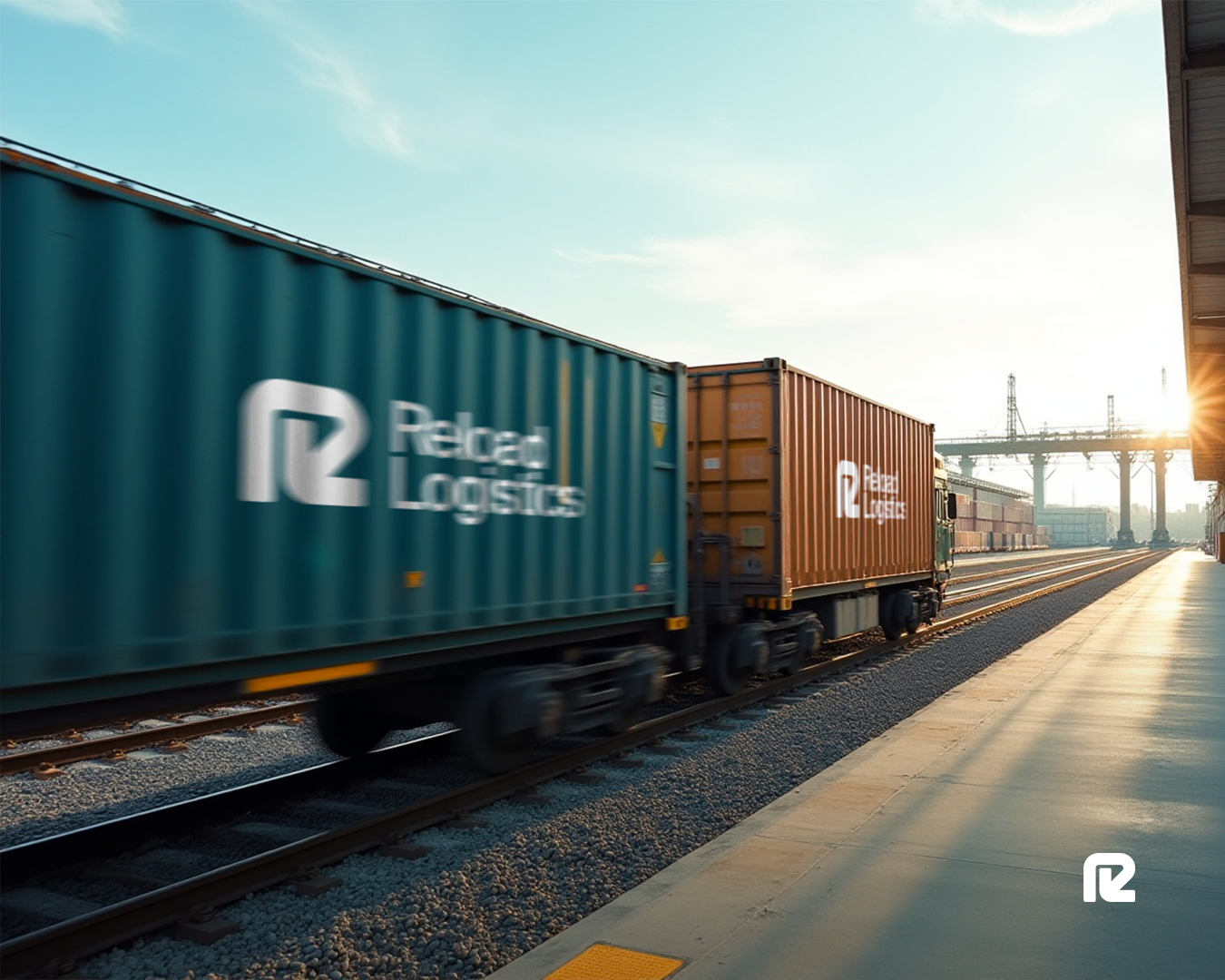Understanding Demurrage, Detention, and Per Diem Charges in Southern African Logistics


Exporters across Southern Africa know the frustration all too well. Your mining shipment is ready, documentation looks solid, and then unexpected delays hit. Suddenly, you're facing mounting costs that weren't in your original budget. The culprits? Demurrage, detention, and per diem charges that can quickly erode your profit margins.
These fees might seem like administrative nuisances, but for companies moving minerals, commodities, and agricultural products through Southern Africa's complex logistics networks, they represent serious financial risks that demand attention and strategic planning.
What is the Difference between Demurrage, Detention, and Per Diem Charges in Logistics?
These three terms often get thrown around interchangeably, but they're completely different with distinct triggers and timing.
Demurrage hits when your container overstays its welcome at the port or terminal. Most facilities offer a grace period of free days, but once that window closes, the daily charges start to tick. Whether it's customs holding up your paperwork or trucking delays preventing pickup, the shipping line starts billing you for every extra day.
Detention becomes your problem after the container leaves the terminal but doesn't make it back within the agreed-upon time frame. Maybe your goods are taking longer to unload at an inland facility, or perhaps the return journey to the depot hits unexpected snags. Either way, you're now paying daily rental fees for extended container use.
Per diem charges essentially mirror detention fees. Think of them as equipment rental costs that kick in when you exceed your allotted free time. Different shipping lines and regions might use varying terminology, but your wallet feels the same impact regardless.
What Is the Difference Between Demurrage and Detention Charges?
Demurrage happens inside the port or terminal; detention happens outside of the port.
Let’s say you’re exporting minerals from Zimbabwe through Beira:
· If your cargo is delayed at Beira port waiting for customs clearance, you’ll face demurrage charges.
· If the container leaves the port but is delayed in offloading or returning, then detention charges apply.
Both are billed daily by the shipping line, and when stacked across multiple containers, they can add significant costs to a shipment.
What Are Detention Charges?
Detention charges activate the moment your agreed return window closes. Once cargo gets unloaded, that empty container needs to reach its designated depot within the specified timeframe. Southern Africa's logistics landscape creates numerous delay opportunities:
· Trucking shortages during peak seasons
· Deteriorating road infrastructure and port congestion
· Unpredictable border crossing delays
· Weather-related transport disruptions
Even well-intentioned logistics plans can crumble when faced with these regional challenges, particularly for mining and agricultural operations where profit margins leave little room for unexpected costs.
The Southern Africa Perspective
Companies shipping from landlocked nations like Zambia, Zimbabwe, and the DRC, face amplified exposure to these charges. The sheer distances involved, combined with infrastructure limitations and bureaucratic complexity, make delays almost inevitable.
Picture a Copperbelt copper exporter's journey: containers travel over 1,500 kilometers to reach coastal ports like Durban, Beira, or Walvis Bay. Each border crossing brings inspection protocols, documentation requirements, and potential holdups. Missing a vessel cutoff or container return deadline becomes costly when any single checkpoint experiences problems.
Peak export seasons intensify these risks dramatically. During harvest periods or mineral export surges, trucking capacity becomes scarce. Containers often sit idle at facilities not due to operational inefficiency, but simply because available trucks can't handle the volume surge.
How Do Imports and Exports Affect Detention and Demurrage?
Import operations typically face demurrage when cargo sits at port due to delayed documentation or slow customs processing. Export operations more commonly encounter detention charges when loaded containers experience trucking delays or unforeseen disruptions preventing timely port arrival.
Smart logistics providers recognize these patterns and build mitigation strategies around coordinated inland operations and proactive scheduling to minimize exposure on both sides.
Demurrage vs Detention Fees in Supply Chain Container Shipping
Both demurrage and detention fees serve as mechanisms to keep containers moving. In theory, they ensure shipping lines get their assets back quickly. But in practice, they often become pain points for shippers and exporters.
Efficient container turnaround becomes difficult when:
· Inland roads are in poor condition
· Warehouses are far from the nearest container depot
· Border posts are heavily congested
This explains why many exporters now include detention and demurrage risk management as part of their logistics planning. Tools like proactive alerts, and strong carrier relationships go a long way in keeping these costs down.
How are Demurrage and Detention Charges Calculated
Calculating these fees follows a straightforward formula:
(Days exceeding free time) × (Daily rate) = Total charges
Here's areal-world scenario: Your shipping line provides 7 free days, but clearance stretches to 10 days. Those 3 extra days at $150 daily rate cost you $450 in additional charges.
These rates fluctuate based on carrier policies, container sizes, and specific port requirements. The longer delays persist, the more painful your final bill becomes.
Who Pays Demurrage Charges?
Typically, the consignee or cargo owner bears responsibility for demurrage charges. This could fall on exporters or importers, depending on contractual arrangements. Freight forwarders or third-party logistics providers occasionally absorb these costs, but usually only when they've directly caused the delays.
Smart logistics partnerships establish clear responsibility frameworks upfront, preventing disputes and ensuring accountability throughout the supply chain process.
What is the Difference Between Demurrage and Port Storage Charges?
This distinction can confuse many shippers because both charges can apply simultaneously.
Demurrage comes from your shipping line for extended container use beyond free time allowances.
Port storage charges originate from terminal operators occupying their space beyond the allocated periods.
A delayed container at Beira due to incomplete documentation might generate both demurrage from your shipping line and storage fees from port authorities. Understanding this dual exposure helps with accurate cost forecasting.
How to Avoid Demurrage and Detention Fees
While it’s not possible to eliminate every delay, many demurrage and detention costs are avoidable with better planning and coordination. Here are a few proven strategies:
1. Finalize Documentation Early: Port delays frequently trace back to incomplete paperwork. Having customs documentation, bills of lading, and clearance forms ready well before vessel arrival prevents many clearance bottlenecks.
2. Build in Time for Border Crossings: Certain border posts consistently experience congestion. Build meaningful buffers into your scheduling rather than hoping for best-case scenarios.
3. Negotiate Longer Free Time When Possible: Long inland transport routes often need more than standard allowances. Proactive discussions with carriers about extended free time can prevent automatic penalties.
4. Leverage Strategic Inland Warehousing: Transloading operations at strategically located warehouses enable rapid container turnaround. Quick unloading and immediate container return eliminate many detention risks.
Best Ways to Handle Detention and Demurrage Fees
If you're already facing these charges, recovery options still exist:
· Scrutinize bills for calculation accuracy and proper documentation
· Request partial waivers when delays resulted from port authority or customs issues beyond your control
· Analyze shipment data to identify recurring bottleneck patterns
· Partner with logistics providers who understand regional complexity and build resilience into scheduling
Regular performance analysis helps identify where and when charges typically occur, enabling continuous improvement and proactive cost control.
How Reload Logistics Helps Exporters Stay Ahead
Reload Logistics supports clients across mining, agriculture, and commodity trade with tailored solutions to reduce the risk of demurrage and detention.
By combining end-to-end visibility with boots-on-the-ground knowledge, Reload helps exporters:
· Monitor container deadlines
· Coordinate transport across multi-country corridors
· Manage customs clearance and regulatory compliance
· Use inland warehouses to shorten container cycles
· Generate reports that flag recurring delay issues
Our team works along the Beira, Durban, and Walvis Bay corridors, and we understand the nuances of operating in landlocked markets. Whether you're moving copper or maize, our local teams ensure your cargo keeps moving.
Categories






